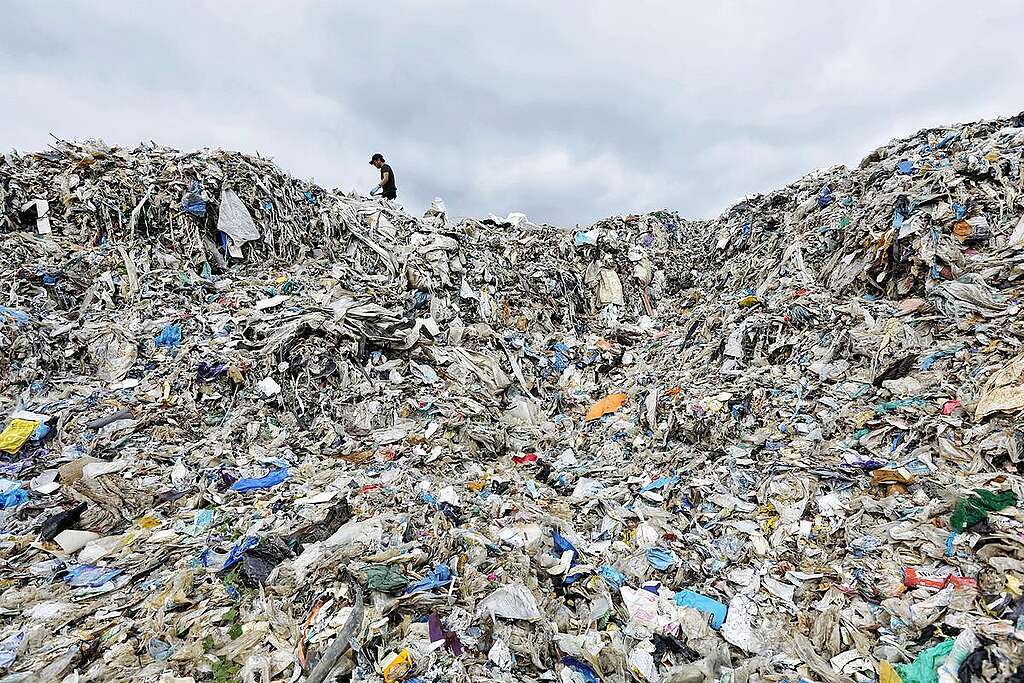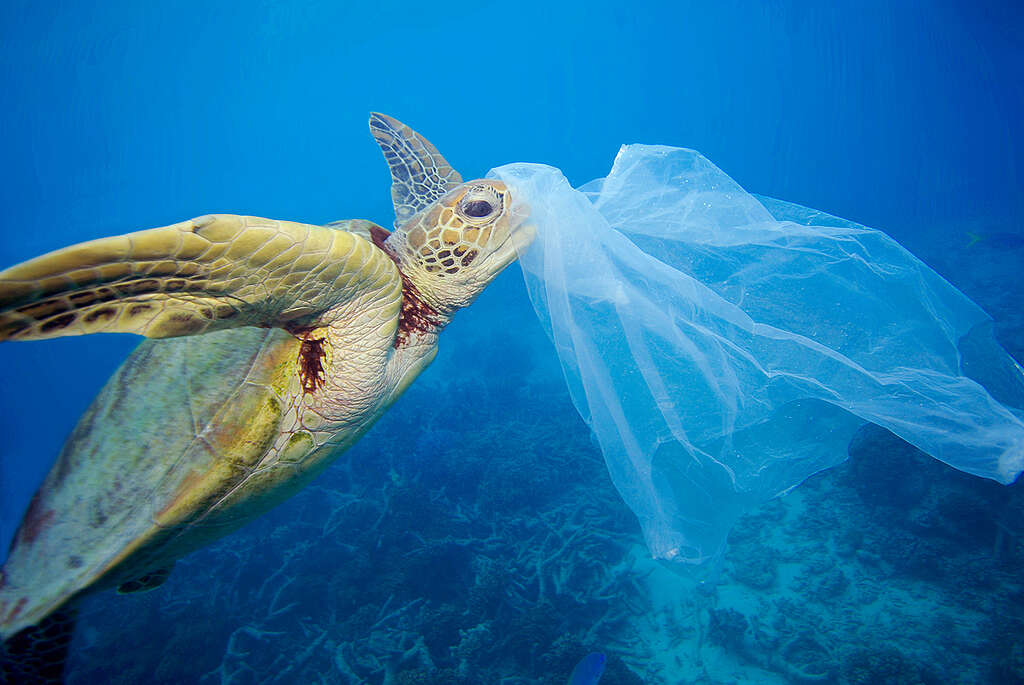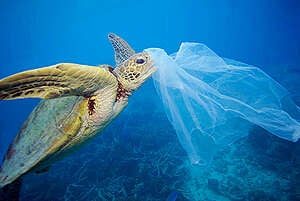The plastics crisis is one of the most pressing environmental challenges of our time. Despite efforts to manage plastic waste, the crisis persists, exacerbated by the ongoing production of plastics and ineffective solutions to tackle the plastic problem.
The concept of plastic recycling has been heavily promoted by the plastics industry, particularly by major oil companies, as a solution to the plastic crisis. By perpetuating the myth that recycling can solve the plastics problem, these companies divert attention from the more significant issue: the continued production of virgin plastics. This greenwashing tactic makes consumers believe that their recycling efforts are enough to address the problem, while in reality, the production of new plastics continues unabated, exacerbating the crisis.
According to estimates published by the OECD in 2022, globally only 9% of plastic waste produced from 1950 to 2015 was successfully recycled. The OECD estimates that approximately 15% of plastic waste is collected but is not recycled.1 19% is incinerated, 50% enters landfill and 22% is mismanaged waste that is either deliberately or accidentally dumped in the environment or open burned.

With plastic production projected to increase in the coming years, it is clear that we cannot solve this crisis through waste management and cleanups alone. At the current rate of production, approximately 12,000 million tonnes of plastic waste will have been generated by 2050.2
It’s time to shift our focus from false solutions to genuine, impactful changes.
Here’s why the commonly proposed solutions, including plastic recycling, are not enough to tackle the plastics crisis and why we need a strong global plastics treaty that will cut plastic production by at least 75% and invest in refill and reuse solutions.
The Myth of Plastic Recycling
Mechanical recycling of plastic waste is a well established industry, but not all plastics are suitable for recycling using this method, in part because of additives incorporated during the manufacturing process, and also because the number of times that plastic can be recycled mechanically is finite because the repeated melting and moulding process degrades the quality of the plastic.
Most plastic can only be recycled a few times, and many of the types of plastic packaging currently on the market don’t actually have a recycling market. This means that many single-use plastics have no other destination than landfill, incinerators or our rivers and oceans.
Recycling used PET bottles into new PET bottles is called ‘closed-loop’ recycling and involves collecting and cleaning the used PET, melting it into pellets, combining the pellets with virgin PET and then making into new bottles that are ready for the manufacturer to refill with product. Closed-loop recycling requires high-quality materials and is a more complex process than ‘downcycling PET bottles into materials such as garden furniture. Recycling PET drink bottles does not address the problem that we consume a lot of plastic.
Mechanical recycling is only feasible for certain types of plastic3. Polyethylene (PE) and polypropylene (PP) are common packaging materials, but when recycled, the use of these types of plastic is often limited to non-white items that do not have mechanical strength. Some plastics, including PVC thermoforms and laminated flexible packaging such as plastic sachets (a type of packaging that combines two or more different polymers and is therefore not recyclable) are complex to recycle.
Recycling plastic simply delays the problem of plastic waste, it doesn’t solve it.
Chemical Recycling
Plastics are made from chains of monomers called polymers. Chemical recycling processes break the chains and convert the polymers into monomers. The monomers can then be used as virgin feedstock to manufacture new plastic products. Chemical recycling technologies include pyrolysis, gasification, chemical depolymerization, catalytic cracking & reforming, and hydrogenation.
Chemical recycling is often promoted by the plastics industry as a solution, but it is a risky, expensive, and energy-intensive process. 4 5
Incineration and Open Burning of Plastic
In many low-income countries, a significant portion of waste is not collected and is often burned openly. This practice releases toxic chemicals, contributing to poor air quality and health problems.
Depending on the composition of the plastic that is being burned, the following health-harming pollutants may be released: bisphenol A, phthalates, black carbon, dioxins, furans and particulate matter. 6
Burning plastic creates air pollutants, fly ash, bottom ash, and boiler ash/slag; it can harm human health and the planet by emitting respiratory irritants, cancer-causing dioxins/furans, heavy metals including mercury, cadmium and lead, and major greenhouse gasses – contributing to the climate crisis.7
Alternative Materials to Plastic
Pulp and paper
Global forest resources are already limited. Replacing all single-use plastic packaging with paper and card will put a strain on natural resources, create a cycle of additional waste and will put old-forest growth and indigenous communities at risk if felling for plantations takes place.8
Food packaging alternatives to plastic that are made from paper and card may contain endocrine disrupting chemicals called per- and polyfluoroalkyl substances (PFAS). Most of the food packaging materials that contain PFAS’s are paper and card because PFAS is added to repel oil and water. 9
Bioplastics
Bioplastics are made from feedstocks such as corn, cassava, sugar beet or sugar cane. Not all bioplastics are biodegradable, and those that are often require industrial composting facilities and release carbon dioxide (or methane) when they break down.
Bioplastics manufactured from corn are grown intensively, require water and land use (that could be in competition with crops for human consumption) and if they are grown with the use of pesticides can have a harmful impact on the environment.10
The Illusion of Plastic Offsetting and Credits
Plastic offsetting, or the use of plastic credits, allows companies to avoid reducing their own plastic footprint. This practice is another form of greenwashing, enabling businesses to maintain their current levels of plastic use under the guise of sustainability. Instead of offsetting, companies should focus on reducing their plastic use and investing in systems of refill and reuse.
The plastics crisis cannot be resolved through plastic recycling, greenwashing, or shifting to alternative materials. We need a fundamental shift in how we produce and consume plastics. This involves reducing plastic production, promoting reuse and refill systems, and implementing strong international regulations. Only by addressing the root causes of the crisis can we hope to create a sustainable and plastic-free future.

Governments around the world are now negotiating a Global Plastics Treaty – an agreement that could solve the planetary crisis brought by runaway plastic production. Let’s end the age of plastic – sign the petition for a strong Global Plastics Treaty now.
Sign petition- https://www.oecd.org/environment/plastic-pollution-is-growing-relentlessly-as-waste-management-and-recycling-fall-short.htm
- Geyer, R., Jambeck, J. R. & Law, K. L. Production, use, and fate of all plastics ever made. Science Advances 3, e1700782. (2017). https://advances.sciencemag.org/content/3/7/e1700782
- M.T. Brouwer, E.U. Thoden van Velzen, A. Augustinus, H. Soethoudt, S. De Meester, K. Ragaert Predictive model for the Dutch post-consumer plastic packaging recycling system and implications for the circular economy Waste Manag., 71 (2018), pp. 62-85 DOI: 10.1016/j.wasman.2017.10.034
- Rageart, K., Delva, L. & Van Deem, K. Mechanical and chemical recycling of solid plastic waste. Waste Management69, 24–58 (2017).
- Solis, M. & Silveira, S. Technologies for chemical recycling of household plastics – A technical review and TRL assessment. Waste Manag. 105, 128–138 (2020). DOI: 10.1016/j.wasman.2020.01.038
- Kaza, S., Yao, L., Bhada-Tata, P. & Van Woerden, F. What a Waste 2.0: A Global Snapshot of Solid Waste Management to 2050 World Bank Publications (2018) License: CC BY 3.0 IGO
- Rahimi, A., García, J. Chemical recycling of waste plastics for new materials production. Nat. Rev. Chem. 1, 0046 (2017). DOI: 10.1038/s41570-017-0046
- Greenpeace (2019), Countdown to Extinction, June 10, 2019, page 93. Available at: https://www.greenpeace.org/international/publication/22247/ countdown-extinction-report-deforestation-commodities-soya-palm-oil
- Trier, X., Granby, K. & Christensen, J.H. Polyfluorinated surfactants (PFS) in paper and board coatings for food packaging. Environ. Sci. Pollut. Res. 18, 1108–1120 (2011). https://doi.org/10.1007/s11356-010-0439-3
- F. Gironi, V. Piemonte. Bioplastics and petroleum-based plastics: strengths and weaknesses Energy Sourc. Part A: Recov. Utiliz. Environm. Effects, 33 (21) (2011), pp. 1949-1959.


